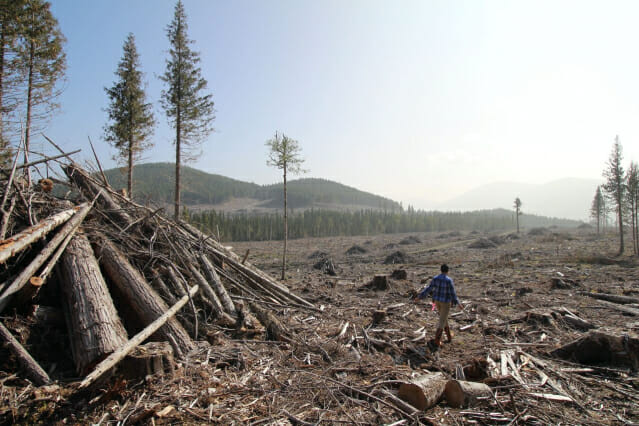
A survey found that domestic bioenergy (biomass) power generation has grown more than 60 times over the past six years. Bioenergy is classified as a renewable energy source, but it is pointed out that it should be excluded from the renewable energy source because it promotes forest destruction and greenhouse gas emission during production and consumption.
According to the’Understanding Asia’s bioenergy trade and supply chain risk’ seminar hosted by the environmental group Climate Solutions on the 24th, biomass power generation has grown more than 61 times over the past six years and is increasing at a rapid pace.
Bioenergy ranked first among renewable energy sources from 2014 to 2017 in the amount of renewable energy supply certificates (REC) issued. The production of bioheavy oil based on palm oil also increased by about three times from 2014 to 2019.
According to the analysis, the dependence on import of raw materials is also increasing. Korea currently imports over 90% of wood pellets from Vietnam and other places. More than 60% of palm seed husk (PKS) bio-solid fuel (bio-SRF) and biofuels are being imported from Malaysia and Indonesia.

Biomass and palm oil-based biofuels are expanding in scale with subsidies from governments in accordance with the trend of energy conversion.
In the European Union (EU), biomass accounts for up to 37% of renewable energy sources. From 2016 to 2018, the area of forest harvested across Europe increased by 49% compared to 2011-2015, and biomass loss increased by 60%.
The situation in North America such as the United States and Canada is similar. In North America, where timber pellet logging for export is on the rise, a supply chain risk issue has been raised as habitats of endangered species are included among the logging areas.
Environmental groups in each country argued that the government needs to improve its renewable energy policy in a way that reflects the risk of the supply chain of bio energy. It is pointed out that the development of bioenergy, which adversely affects the climate and ecosystem, runs counter to the purpose of the renewable energy policy of transition to eco-friendly green energy.


Kim Su-jin, a senior researcher at Climate Solutions, said, “It is desirable to reduce the use of fossil fuels and spread renewable energy to achieve the goal of the 2050 Net Zero, but we are very concerned about the increasing dependence on bioenergy.” Fuels have a larger carbon footprint, but the government continues to add REC weights to encourage use.”
“The only way to prevent the massive climate, environmental and social damage caused by bioenergy is to exclude them from renewable energy and other green policies, and to stop subsidies,” said Almus Ernsting, biofuel watch researcher.
Kurniawan Sabah, director of Indonesian civic group Indis, said, “In order to fill the renewable energy quotas of other countries, rainforests in Indonesia are being destroyed, and the homes of endangered animals and plants and indigenous peoples are disappearing.” “In the process of producing renewable energy raw materials, it should be reflected in the renewable energy policy, taking into account how it affects the environment and local communities of the country of origin.”
“The government should stop providing public financial support to companies involved in the issue of deforestation and human rights violations in the bioenergy production process,” said Jung Min-young of the Public Interest Law Center Appeal. “In the process of increasing the ratio of biodiesel blending obligations, “We need to put in place a system to monitor the supply chain so that the import of palm oil produced by infringement does not increase.”
Related Articles

“Korea, the US, Japan, and the EU should stop paying biomass subsidies”

Industrial Education Research Institute held a seminar on biofuels and biomass

East-West Power, revitalizing biomass industry with neglected forest

10,000 tons of wood chips from forest fires in Gangwon, used as biomass fuel
